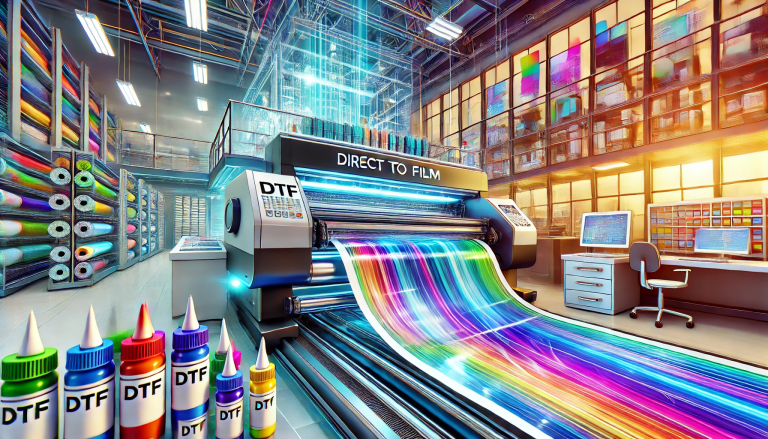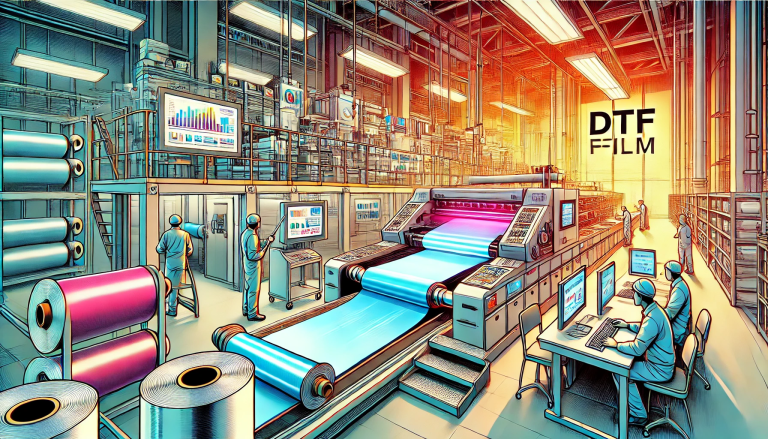“Reuse, Recycle, Rediscover: Is DTF Film Reusable?” -MAXDTF- PET Film Transfer Factory, DTF printing paper Manufacturer, Made in China
Introduction
Is DTF film reusable? This is a question that many people have when it comes to using this type of film for their projects. DTF (direct-to-film) film is a type of film that is used for a variety of applications, including printing, photography, and other imaging processes. It is a popular choice for many because of its affordability and convenience. In this article, we will discuss the pros and cons of using DTF film and whether or not it is reusable. We will also provide some tips on how to properly care for and store DTF film to ensure its longevity.
Comparing Reusable DTF Film to Other Types of Film
Reusable DTF film is a type of film that is becoming increasingly popular in the photography industry. It is a unique type of film that offers several advantages over other types of film. In this article, we will compare reusable DTF film to other types of film to help you decide which type of film is best for your needs.
The first type of film we will compare to reusable DTF film is traditional film. Traditional film is the most common type of film used in photography and is available in a variety of sizes and formats. Traditional film is typically more affordable than reusable DTF film, but it is also more difficult to use and requires more time and effort to develop. Additionally, the traditional film is not as durable as reusable DTF film and can be damaged if not handled properly.
The second type of film we will compare to reusable DTF film is digital film. Digital film is becoming increasingly popular in the photography industry due to its convenience and ease of use. Digital film is typically more expensive than traditional film, but it is also much easier to use and requires less time and effort to develop. Additionally, digital film is much more durable than traditional film and can withstand more wear and tear.
Finally, we will compare reusable DTF film to instant film. Instant film is a type of film that produces a photograph almost immediately after it is exposed. Instant film is typically more expensive than traditional and digital film, but it is also much easier to use and requires less time and effort to develop. Additionally, instant film is much more durable than traditional and digital film and can withstand more wear and tear.
In conclusion, reusable DTF film offers several advantages over other types of film. It is more durable than traditional and digital film, and it is also much easier to use and requires less time and effort to develop. Additionally, reusable DTF film is typically more expensive than traditional and digital film, but it is also much more convenient and can produce high-quality photographs. Therefore, if you are looking for a type of film that is easy to use and produces high-quality photographs, reusable DTF film may be the best option for you.
The Cost Savings of Reusable DTF Film
The use of reusable DTF film is becoming increasingly popular in the printing industry due to its cost-saving benefits. DTF, or direct-to-film, is a printing process that uses a digital printer to directly transfer an image onto a film substrate. Reusable DTF film is a type of film that can be used multiple times, allowing for a more cost-effective printing process.
The cost savings of reusable DTF films are significant. By using reusable film, businesses can save up to 50% on their printing costs. This is because the cost of the film is spread out over multiple uses, rather than having to purchase a new roll of film for each print job. Additionally, the cost of disposing of the used film is eliminated, as the film can simply be wiped down and reused.
Reusable DTF film also offers other cost savings. For example, it eliminates the need for costly pre-press processes, such as film stripping and plate making. This can save businesses time and money, as these processes are often labor-intensive and require specialized equipment. Additionally, reusable DTF film can be used with a variety of digital printers, allowing businesses to choose the most cost-effective option for their needs.
Finally, reusable DTF film is more environmentally friendly than traditional film. By eliminating the need for disposing of used film, businesses can reduce their environmental impact and save money on waste disposal costs.
Overall, the cost savings of reusable DTF films are significant. By using reusable film, businesses can save up to 50% on their printing costs, eliminate costly pre-press processes, and reduce their environmental impact. For these reasons, reusable DTF film is becoming increasingly popular in the printing industry.
The Environmental Impact of Reusable DTF Film
The use of reusable DTF (direct-to-film) film has become increasingly popular in recent years due to its cost-effectiveness and convenience. However, it is important to consider the environmental impact of this technology before making the switch.
Reusable DTF film is made from a polyester base, which is a type of plastic. This plastic is not biodegradable, meaning that it will remain in the environment for a long time. Additionally, the production of this plastic requires the use of petroleum-based chemicals, which can be harmful to the environment.
The use of reusable DTF film also has an impact on water resources. The film must be washed after each use, which requires a large amount of water. This water is then contaminated with chemicals from the film, which can be harmful to aquatic life.
The disposal of reusable DTF film also has an environmental impact. The film must be disposed of properly to avoid contamination of the environment. If the film is not disposed of properly, it can end up in landfills or in the ocean, where it can take hundreds of years to decompose.
Overall, the environmental impact of reusable DTF film is significant. While the convenience and cost-effectiveness of this technology are undeniable, it is important to consider the environmental implications before making the switch. By taking the time to properly dispose of the film and reduce water usage, the environmental impact of reusable DTF film can be minimized.
How to Properly Clean and Store Reusable DTF Film
Reusable DTF film is a great way to save money and reduce waste when printing. However, it is important to properly clean and store the film to ensure that it lasts for a long time. Here are some tips for properly cleaning and storing reusable DTF film.
Cleaning
Before cleaning the film, make sure to remove any excess ink or debris from the surface. This can be done with a soft cloth or a lint-free paper towel. Once the surface is clean, use a mild detergent and warm water to clean the film. Make sure to use a soft cloth or sponge to avoid scratching the surface. Rinse the film with clean water and allow it to air dry.
Storing
Once the film is dry, it is important to store it properly. Store the film in a cool, dry place away from direct sunlight. Make sure to keep the film away from any sources of heat or moisture. If possible, store the film in a sealed container to protect it from dust and dirt.
By following these tips, you can ensure that your reusable DTF film is properly cleaned and stored. This will help to extend the life of the film and ensure that it is ready for use whenever you need it.
Exploring the Benefits of Reusable DTF Film
Reusable DTF (Direct-to-Film) film is a revolutionary new technology that is revolutionizing the way businesses and individuals create and store digital images. This type of film is designed to be used multiple times, allowing users to save money and time while still producing high-quality images. In this article, we will explore the many benefits of using reusable DTF film.
The first benefit of using reusable DTF film is cost savings. By using this type of film, users can save money on the cost of purchasing a new film each time they need to print a new image. Additionally, the cost of developing the film is significantly lower than traditional film, as it does not require the use of chemicals or other materials. This makes it an ideal choice for those who are looking to save money on their printing costs.
Another benefit of using reusable DTF film is the convenience it provides. Unlike traditional film, this type of film does not require the user to wait for the film to be developed before they can use it. Instead, the user can simply insert the film into their printer and begin printing immediately. This makes it much easier and faster to produce high-quality images.
Finally, reusable DTF film is also much more environmentally friendly than traditional film. Since it does not require the use of chemicals or other materials, it does not produce any hazardous waste. Additionally, the film is designed to be used multiple times, which reduces the amount of waste that is produced. This makes it an ideal choice for those who are looking to reduce their environmental impact.
Overall, reusable DTF film is an excellent choice for those who are looking to save money and time while still producing high-quality images. By using this type of film, users can save money on the cost of purchasing new film each time they need to print a new image, as well as reduce their environmental impact. Additionally, the convenience it provides makes it much easier and faster to produce high-quality images. For these reasons, reusable DTF film is an excellent choice for those who are looking to save money and time while still producing high-quality images.
Conclusion
In conclusion, DTF film is a great option for those looking for a reusable and cost-effective way to package their products. It is durable, easy to use, and can be reused multiple times. It is also an environmentally friendly option, as it is made from recycled materials and can be recycled again after use.



